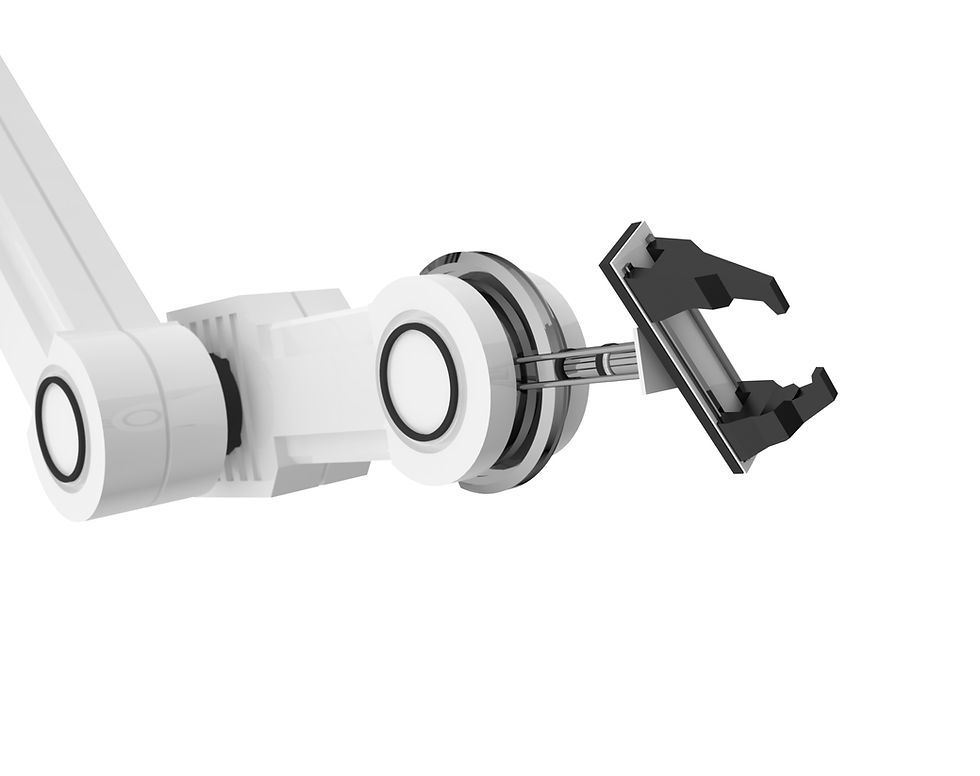Building your Smart Product portfolio
- FutureFactor360
- Oct 5, 2021
- 5 min read
While development of Smart Products is now an imperative for organizations, many of them continue to face significant challenges in transitioning towards the world of smart, connected products.
What challenges are organizations facing as they build smart products?
Lack of a clear enterprise strategy: Companies are wary of making necessary investments into building smart products and adopting new business models. Another reason for failure is the tactical approach taken by companies by making pockets of interventions without clear definition of success metrics for the pilots and PoCs. Such actions have a negative impact on business growth and hamper the enterprise’s ability to capitalize on new opportunities
Modernization of legacy infrastructure: Integrating modern IoT enabled products into a legacy business is challenging. Enterprises will need to take a broader view of their current technology ecosystem and assess if there is a requirement to overhaul or modernize the existing infrastructure in order to support the future product strategy of the company
Challenges in keeping up with customer expectations: The customers’ requirements will evolve constantly, and it can take significant amount of time and resources to constantly update the product to keep up with such expectations. Additionally, customers may use your IoT product in ways that you didn’t even expect, creating issues that you hadn’t anticipated. It is critical that manufacturers look at how they could make their IoT product ecosystem as modular, flexible, and extensible as possible
Fragmented Technology Ecosystem: Given the plethora of technology choices available today and lack of global standards, “standardizing” various technology elements required to enable a smart product is a significant challenge
Connectivity issues: The first step in an enterprise’s smart product journey is to enable a basic connected ecosystem. However, once shipped out, the products can be used in unique environments that are often not considered and tested by the manufacturer. Product connectivity failures in such instances especially for safety critical products can pose serious challenges to both customers and manufacturers
Security and Privacy: The heterogenous nature of protocols and network architecture required between systems, products and customers pose several security and privacy challenges. In an ever-changing cybersecurity landscape, it is also imperative that the products undergo regular security upgrades which requires dedicated resources and investments to be made
Lack of new-age digital talent: Lack of knowledge around implementation of advanced IoT and analytics stack is holding back companies from making large investments into their smart product portfolio. Further, there is limited digital technology capabilities that are critical to support a secure connected product ecosystem
Optimum Monetization strategy: As companies move from pure products to pure services, then nature of business models also change from linear, fixed margin products to variable services whose revenues that are difficult to valuate
Data Ownership: A connected ecosystem creates a data value chain that may be distributed among various stakeholders. One of the greatest challenges is to decide the extent of data ownership between various stakeholders and the extent to which they would be able to monetize this data.
Overcoming the challenges and successfully building smart products
It is important that manufacturers adopt a prudent approach in their smart product journey ensuring they have a clear understanding of the efforts required to develop smart products and the potential business value that could be generated.
Further, only enabling smart products will not suffice. Understanding the context of customer- product interaction is very important. Enterprises need to map these scenarios as they evolve from products to services. Below are a series of best practices that product manufacturers could adopt in order to extract the maximum value from their smart product portfolio:
1. Arrive at common understanding and expectations across stakeholders in the organization
Before embarking on this journey, enterprises must first formulate the expectations from a smart product and imagine the possibilities that it creates for customers. This exercise could be done through Art of Possible workshops and breakout sessions where key CXO stakeholders and product owners deliberate and find answers to key questions such as:
How do we define a smart intelligent product?
What will be the scope of the product development in this context?
What are our customer needs and opportunities?
How can technology address the customer expectations?
What additional services can we offer to our customers
How can we monetize this? Are customers willing to pay for such value-added services?
The executives must chart out a clear roadmap and communicate it to others within the organization, through specialized change management programs and knowledge transfer initiatives etc.
This helps in ensuring the alignment of all the relevant stakeholders involved in the smart products initiatives.
2. Decide on the optimal business strategy
C-level executives must think deeply about the shift to servitization models and how customer needs and demands will change in this context. Businesses must also identify value that can be created along the dimensions of
Business growth
Operations excellence
Product innovation
Enhanced customer experience
Social and regulatory impact
Building a robust business scenario model can help forecast the long-term value, potential RoI and also mitigate expected business risks
3. Create a Cross Function System House
A System house will be a critical enabler to accelerate the digital transformation across multiple business units and products. It is necessary for an enterprise to create a system house that can build reusable technology stacks and quickly deploy new use cases through a team of experts across various functions, through a pre-defined set of collaborative operational processes. This helps in reducing costs associated with continuous product innovation and improvement.
4. Define a scalable, replicable technology stack
Choosing the right technology depends on a combination of the maturity level of the connected infrastructure, desired product functionalities, perceived customer value and selected business model. Organizations need to deliberate in building the right technology architecture in a way that it avoids redundancies and complexities as they scale these initiatives.
5. Adopt Start-up Mindset
The future cannot be an extrapolation of the past or present. Digital disruption has created an inflection point for businesses to rethink their priorities and future product growth strategy. The competitive landscape is rapidly evolving, and business threats are not from traditional competitors, but from new entrants who are building their operations ground-up based on a digital lattice. In order to combat these challenges, traditional companies need to adopt a start-up mindset. This will help them move out of the usual frame of reference and uncover un-articulated needs and sources of value by going beyond the present understanding, competencies and constraints of their business.
6. Partner Ecosystem creation
Open innovative practices have become the norm in today’s world where value is being created at the intersection of various industries. It may not be feasible for an organization to independently build smart products. Organizations can better innovate by adopting the principles of co-creation and co-innovation by collaborating with a wider set of partners in the product ecosystem. A winning partner ecosystem depends on clearly defining data ownership and revenue sharing models.
7. Build a robust MVP Roadmap to ensure scalability
To realize the full potential of smart products, it is important to expand beyond just the MVP or proof of concept. This requires enterprises to build a detailed MVP roadmap. The MVP can be scaled in an organized manner for more effective monitoring of the efficiency and success outcomes of the initiatives. A phased approach also allows organizations to make directional changes and realign priorities on an ongoing basis.
How can FutureFactor360 help enterprises in their journey of enabling smart and intelligent products?
FutureFactor360 has worked closely with large manufacturing organizations to identify new product value creation opportunities, articulate the business value proposition and develop strategic blueprints and roadmap for smart products.
Case Study:
As part of a long-term engagement with a leading automotive Tier 1 supplier, we helped develop an organization wide IoT product strategy roadmap and business models for over 300 high value components
We have developed readily referenceable frameworks, blueprints and solutions over the course of our engagements supporting global product manufacturers in their smart product initiatives. Below are key areas where Future Factor could support your organization regardless of where you are in this transformation journey



Comments